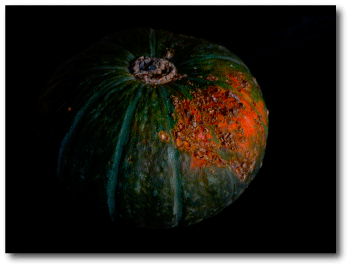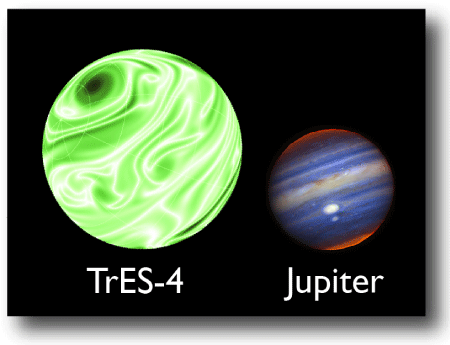
Image Source.
The TrES survey announced the discovery of a new transiting planet today, raising the number of known transits to twenty (including Mercury and Venus). The new planet, “TrES-4”, has a mass of order 84% that of Jupiter, and with a radius of 1.67 Rjup, it’s pumped to nearly five times Jupiter’s volume:

The false color image of Jupiter was produced from near-infrared data obtained with the Gemini telescope. The even more luridly false-color representation of TrES-4 is based on a vorticity map from one of Jonathan Langton’s recent simulations.
In order for TrES-4 to be swollen to its current size, it needs to be experiencing heating of order 6×10^27 ergs per second. One way to do this is to have a significant perturbing companion which drives large time-averaged variations in TrES-4’s orbital eccentricity. So far, there are only four published radial velocities for TrES-4, so the orbit could easily be non-circular. More provocatively, if strong orbital forcing is indeed occurring, then there’s a reasonable chance that the perturber might also be observable in transit. I recommend that Transitsearch.org observers keep this bad boy under constant supervision.
